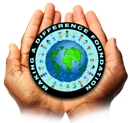Breast cancer has touched the lives of millions of people…whether directly or by loving someone who has been affected by it. In 2020, more than 2.3 million women received a breast cancer diagnosis worldwide with another 685,000 dying from it. (Breast Cancer Research Foundation, Breast Cancer Statistics and Resources, 2020)
October is breast cancer awareness month, symbolized by a month full of pink ribbons, an annual campaign to raise awareness about the impact of breast cancer and to raise funding for research to a cure. It also helps give support to women facing a breast cancer diagnosis and honor the survivors and victims of this insidious disease.
Did you know? The hard facts:
- In the USA, 1 in 8 women will be diagnosed with breast cancer in their lifetime. (BreastCancer.org. “U.S. Breast Cancer Statistics.” 2019.)
- Each year it is estimated that over 220,000 women in the United States will be diagnosed with breast cancer and more than 40,000 will die. Also, a man’s lifetime risk of breast cancer is about 1 in 1,000. (BreastCancer.org. “U.S. Breast Cancer Statistics.” 2019.)
- Breast cancer is the second leading cause of cancer death among women in the US and the first leading cause of cancer death among women globally. (Centers for Disease Control and Prevention. “Basic Information About Breast Cancer.” 2019.)
- The most significant risk factors for breast cancer are being female and aging. About 95% of all breast cancers in the US occur in women 40 and older. (BreastCancer.org. “Breast Cancer Risk Factors.” 2019.)
- Every minute, somewhere in the world, a woman dies from breast cancer. That’s more than 1,400 women every day. (Susan G. Komen Foundation. “Breast Cancer Facts Sheet.” 2019.)
- Each year, it’s expected that about 2,670 men will be diagnosed with breast cancer in the US, and about 500 will die. (American Cancer Society “Key Statistics for Breast Cancer in Men.”)
But a breast cancer diagnosis isn’t a death sentence and there is hope. The positive news is:
- Women who get regularly screened for breast cancer have a 47% lower risk of dying from the disease compared to those who don’t. (American College of Radiology. “New Study Cements Fact That Mammography is a Primary Factor in Reduced Breast Cancer Deaths” 2019.)
- Breast cancer deaths have been declining since 1990 thanks to early detection, better screening, increased awareness, and new treatment options. (National Cancer Institute. “Cancer Statistics.” 2019.)
- In the United States today, there are more than 3.5 million breast cancer survivors — the largest group of all cancer survivors. (Miller, Kimberly D. et al. “Cancer Treatment and Survivorship Statistics, 2019.”)
- According to the American Cancer Society, when breast cancer is detected early, and is in the localized stage, the 5-year relative survival rate is 99%.
Of course, knowing the symptoms and knowing them early is key to a more positive outcome and longer survivability rate. While these symptoms have been widely-publicized for years, we feel they are important enough to repeat here:
- Any change in the size or the shape of the breast.
- Pain in any area of the breast.
- Nipple discharge other than breast milk (including blood).
- A new lump in the breast or underarm (armpit).
- Thickening or swelling of part of the breast.
- Irritation or dimpling of breast skin.
- Redness or flaky skin in the nipple area or the breast.
- Pulling in of the nipple.
- Any changes or signs that worry you, even if not listed here, should have you seeing your doctor right away.”
Plus it’s important to note, while there are different symptoms of breast cancer, many women don’t have any symptoms at all, which is why self-breast exams and annual screenings like mammograms are so vital to early detection.
It isn’t just the knowledge of what to look out for and what the signs are, but being familiar with your own body and the knowledge of what is really going on with it, and not giving into the fear of “what if.” While it is understandable, some women simply don’t know what to watch out for, and many fear knowing that any symptoms they may have could be breast cancer which keeps them from finding out for sure.
Early detection and diagnosis is key to saving a life, potentially your own. Or, if you have any women in your life that you care about, remind them about the importance of getting screened!

